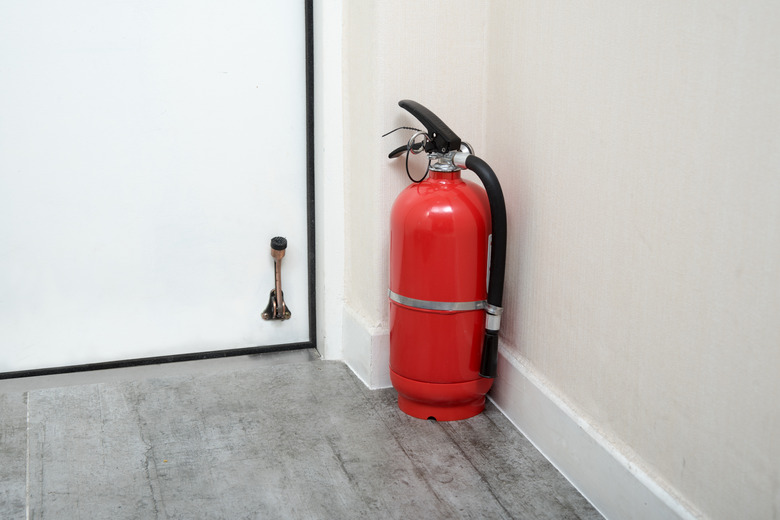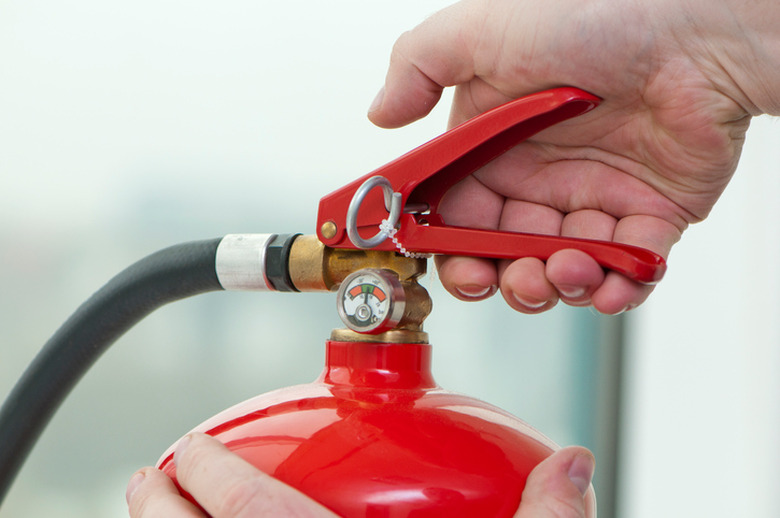How Long Do Fire Extinguishers Last?
Like perishable food supplies, fire extinguishers have expiration dates, and ignoring them is just asking for trouble. In general, fire extinguishers can be expected to last from five to 15 years. But how do you know if the one you're depending on in an emergency has a service life closer to five years than 15 years? That 10-year difference could make all the difference in the "heat of the moment" when a fire actually occurs.
Your fire extinguisher should have a hang tag attached to the safety pin that displays the date of the last inspection. The extinguisher needs to be serviced six years after this date. Many fire extinguishers also have a pressure gauge, and the needle must always be in the green area of the gauge display. If your fire extinguisher has neither a tag nor a pressure gauge, you have to rely on the "five-to-15-year" standard. Assessing whether the unit is still good then depends on knowing two things:
- How long you've had the fire extinguisher.
- How long it was on the store shelf before you bought it.
You probably don't have this information, and if you're like most people, you might be lulled into thinking the fire extinguisher doesn't have an expiration date and is designed to last forever. It isn't, but you don't have to discard it just because you don't know how old it is. A service pro can reset it if the canister is in good working condition.
Tip
Some fire extinguishers have a test button that opens the connection between the tank and the pressure gauge, and if yours has one, it's fine to use it. If it doesn't have this button, don't check the condition by doing a test spray. Once you pull the pin and use a fire extinguisher, it needs to be either serviced or replaced.
Check the Pressure Gauge
Check the Pressure Gauge
Fire extinguishers with pressure gauges are common. The gauge is typically located on the top of the tank near the handle, and the display has a red area (or two red areas) and a green area. The extinguisher is good as long as the needle remains steadily in the green area. Fire marshals recommend checking this gauge once a month. If you notice the needle moving into a red area, even momentarily, you need to service or replace the device.
Pro Resetting of Your Extinguisher
Pro Resetting of Your Extinguisher
You can get your fire extinguisher reset if you notice any of the following conditions:
- The needle on your pressure gauge is wavering
- The inspection date on the hang tag is more than 6 years ago
- You simply don't know how old the unit is
This is a job that needs to be done by a licensed company, which will refill the extinguisher and re-pressurize it according to factory specifications. Resetting your fire extinguisher is preferable to simply discarding it, but keep in mind that the device can only be reset if it is undamaged. If it has a loose handle, cracked nozzle or some other defect, it's probably less expensive to replace it than it is to have a service pro fix the defect and reset the extinguisher.
When to Service or Replace
When to Service or Replace
Fire extinguishers are pressurized to several hundred pounds per square inch, and this makes them more delicate than they appear. If you drop one, or it falls off its wall mount, the impact can damage the internal pickup tube and render the device inoperable, even though the damage is unnoticeable. Any fire extinguisher that falls to the ground should go in for servicing.
Other signs that alert you to the need for servicing are more obvious. Your fire extinguisher needs professional evaluation and/or servicing and resetting if:
- The handle is loose or damaged.
- The nozzle is cracked, broken or blocked.
- The pressure is too low.
- The locking pin is missing.
- The device has been used.
You should also have the unit serviced if the most recent inspection date was more than six years ago. If the fire extinguisher is deployed in a public building, regulations established by the National Fire Protection Association require that it be inspected annually by a licensed service pro.

